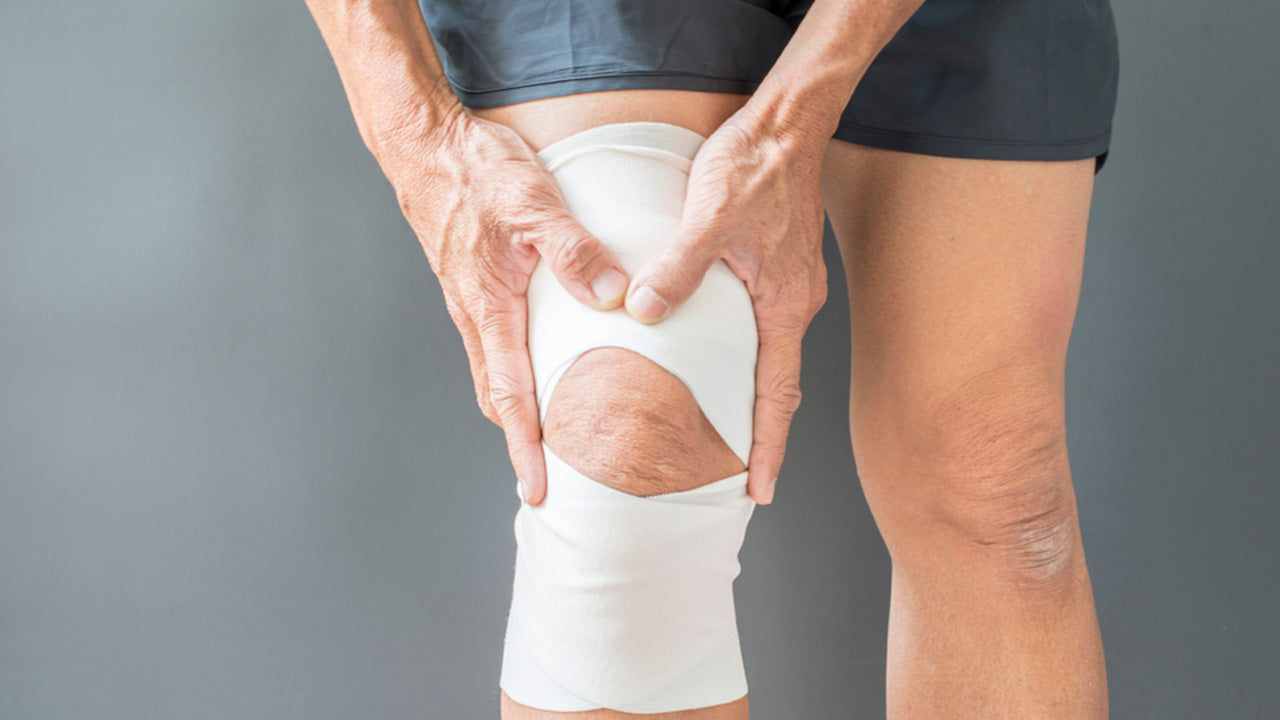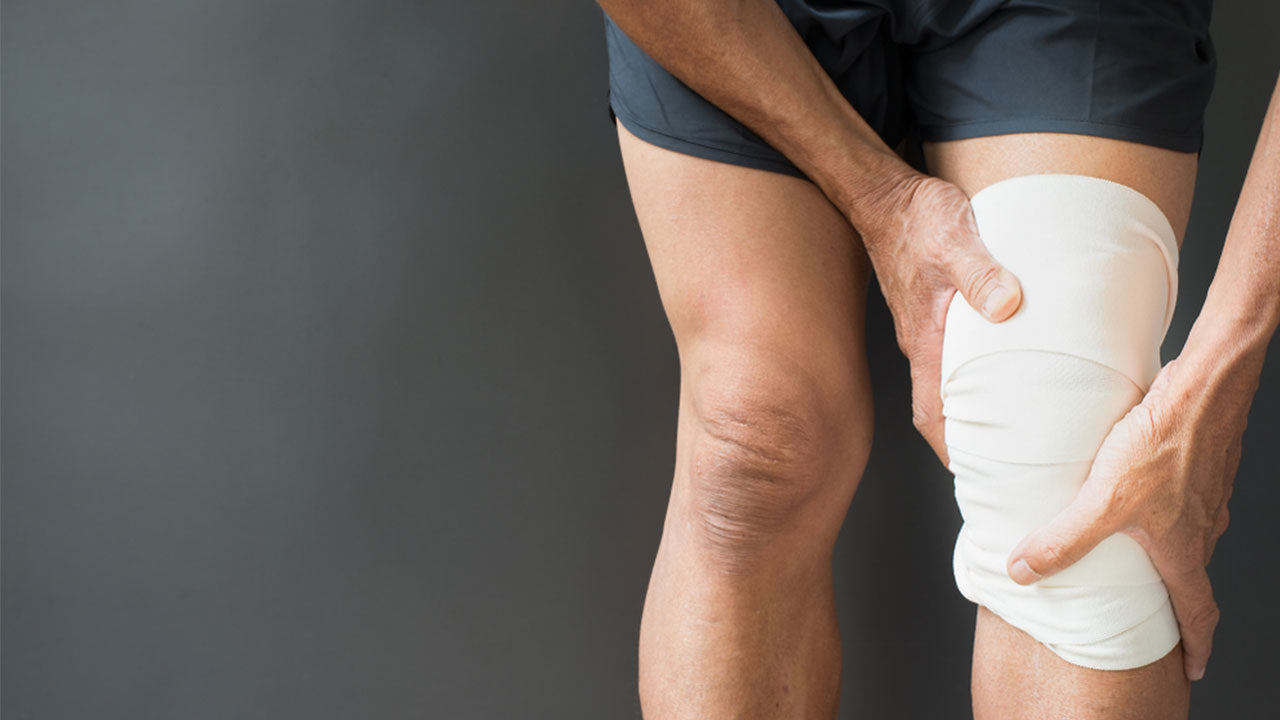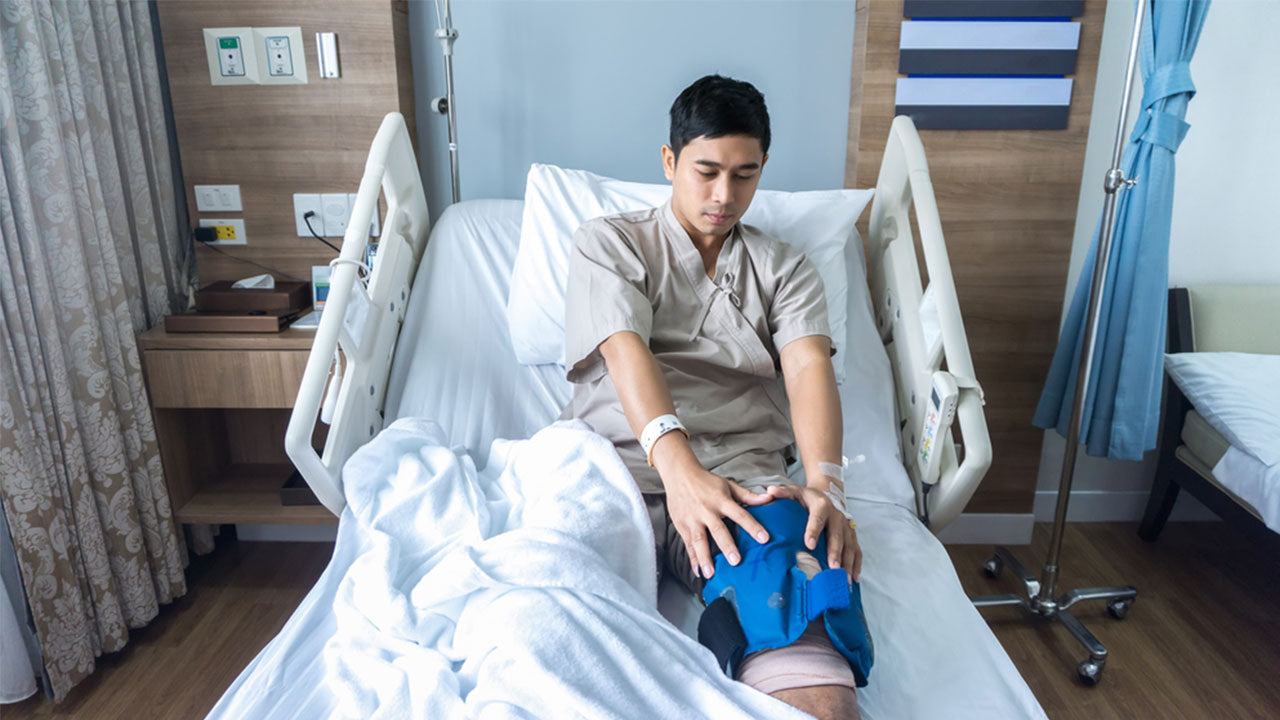How to Prevent and Treat Muscle Atrophy After Stroke
 By: by Amino Science
By: by Amino Science

One year after suffering a stroke, more than half of all stroke survivors are permanently disabled and one-third cannot walk without assistance. Loss of muscle mass greatly contributes to declines in dexterity and strength, and also increases blood sugar levels and the risk for osteoporosis and future cardiac events. Fortunately, there's a way to not only protect against muscle atrophy after stroke, but also increase muscle mass and improve overall quality of life. It's as easy as taking 8 grams of essential amino acids a day!
How Stroke Affects Muscles
A stroke is called a brain attack for good reason. An acute ischemic stroke occurs when the blood supply to the brain is suddenly cut off due to a blockage in the arteries. A hemorrhagic stroke occurs when a blood vessel erupts, causing bleeding into the brain. Both can lead to short-term or long-term brain, muscular, and nervous system damage.
Stroke statistics paint a bleak picture for recovery. Stroke is a leading cause of long-term disability worldwide. According to the latest estimates from the International Journal of Cardiology, over 60% of stroke survivors are chronically disabled and 30% unable to walk on their own. Another 50% of patients suffer the symptoms of a hemiparetic stroke and exhibit weakness on one side of the body. And according to the National Stroke Association, 90% of stroke patients experience some degree of paralysis (or hemiplegia) right after a stroke.
The effects of a stroke—hemiparesis, hemiplegia, loss of sensation, impaired speech, muscle weakness, numbness, difficulty walking, etc.—depend on the type of stroke and the severity of brain injury. A major post-stroke complication is denervation, or neurological damage that blocks brain signals that tell the body to move.
When neurological connections to the arms, hands, feet, or leg muscles are cut off due to a brain lesion, muscle function deteriorates. Muscle is the primary effector organ responsible for disability from stroke, and when the muscles remain stagnant for too long, muscle atrophy—the disintegration of muscle tissue—accelerates and compromises stroke rehabilitation.
Prolonged bed rest, hospitalization, sarcopenia (age-related muscle loss), and difficulties chewing or swallowing can also exacerbate muscle atrophy after stroke, even in previously healthy older adults.
Prevention and treatment of muscle wasting is two-part: feeding the body the muscle-building nutrients it needs, and moving the muscles to increase their functional capacity.
Preventing Muscle Atrophy After Stroke with Nutrition
Nutrition is of the utmost importance for complete stroke recovery. Fruits, vegetables, legumes, nuts, and seeds provide the fiber, vitamins, minerals, and antioxidants your body needs to fight inflammation, infection, and oxidative stress. And lean proteins give your body the essential amino acids required to keep muscle tissues healthy and protect against unwanted weight loss or cachexia (catabolic muscle wasting) that occurs throughout many days of bed rest.
Unfortunately, appetite and the ability to chew and swallow can be diminished in stroke survivors, making whole-body nutrition difficult to manage. That’s why many stroke and heart disease patients are prescribed commercial meal replacements to help shore up nutrient deficiencies, particularly increased protein needs.
These meal replacements fall short in a few ways. They are filling and high in calories, which impacts appetite and overall food intake, thereby defeating any nutrient gains they were designed for. They are also not as effective as a lower calorie and higher-protein option—an essential amino acid supplement designed to subdue inflammation and infection and increase skeletal muscle strength and mass.
Research shows that supplementation with essential amino acids can balance muscle protein turnover and correct excessive muscle loss in stroke patients. For example, a 2019 study demonstrated that an essential amino acid blend produced significantly greater gains in lean body mass and protected against muscle changes far more effectively than the popular commercial meal replacement Bariatric Advantage (1). It makes sense, as essential amino acids are the building blocks of muscle tissue and activate the muscle-building mechanisms of the body.
According to the latest research, essential amino acids also show promising beneficial effects on rehabilitation outcomes.
A study published in the American Journal of Cardiology found that 30 days of oral supplementation with an optimally formulated mixture of amino acids alongside conventional therapy improved exercise capacity in 95 older adults with chronic heart failure (2). Furthermore, a wealth of research, including comprehensive systematic reviews, indicates that a balanced amino acid supplement stimulates muscle protein synthesis, which is compromised during illness and bed rest when physical activity levels are low.
Supplementing with essential amino acids has also been shown to correct excessive muscle loss in the unaffected arm of stroke patients and support rehabilitation efforts.
Italian researchers were interested to see if hypercatabolism (the excessive breakdown of muscle protein) occurs in the unaffected arm muscle of stroke survivors and if supplementing with essential amino acids (EAAs) could offset this muscle loss. After 38 days, patients who supplemented with 8 grams of essential amino acids daily no longer showed evidence of extreme muscle breakdown and instead showed evidence of increases in muscle mass without unwanted increases in fat mass. The study group taking a placebo showed no such effect (3).
Based on this research, The Amino Company designed a targeted essential amino acid blend to help stroke patients and other individuals suffering from critical illness or surgery recover faster and stronger, improving clinical outcomes and overall health.
The essential amino acid (EAA) profile of this surgical recovery supplement has been shown to increase muscle mass, even during times of complete physical inactivity, and generate a significantly larger gram-for-gram effect than any other protein source. Clinical trials on patients undergoing surgical treatments have shown significant improvements across a variety of physical function tests.
To learn more about this recovery formula, click here.

Preventing Muscle Atrophy After Stroke with Movement
What we don’t move, we lose, and nothing illustrates this principle more aptly than muscle loss. A stroke rehabilitation plan always involves movement of affected muscles, such as the biceps or quadriceps.
Your rehabilitation program will likely consist of passive exercises and active exercises to protect against muscle disuse. Passive, or range-of-motion exercises, are carried out by a healthcare professional or a machine that moves and stretches your muscles to help rewire your neural pathways so that the undamaged parts of the brain take over the functions of the damaged ones. Active exercises are performed by the patient to strengthen and support the muscles while optimizing body weight and body composition.
Another widely used technique to help re-educate and strengthen the muscles is electrical stimulation. Electrotherapy stimulates the muscles to contract and relax, thereby improving circulation and reducing pain and spasticity.
When working with your physical therapist or doing your prescribed exercises at home remember that even the smallest progress can lead to huge recovery gains.
We’ve curated more information on stroke recovery, including causes, symptoms, and prevention, in this article. For more resources and support, visit the American Stroke Association website or the American Heart Association website.

Up to 25% off Amino
Shop NowTAGS: #injury/illness
Join the Community
Comments (0)
Most Craveable Recipes





 833-264-6620
833-264-6620



















